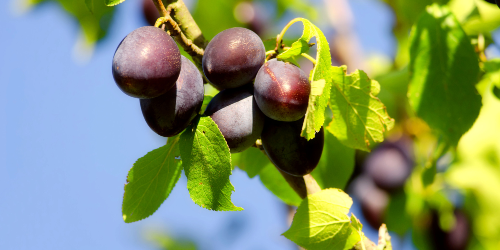Plum is a species that is not resistant to frost. Therefore, plum orchards require a milder climate than, e.g. apple orchards and should be located in warmer parts of the country. It is good if the area designated for a plum orchard is located higher than its surroundings. These can be slight slopes not exceeding 5%. They are relatively easy to cultivate, they are not threatened by soil erosion, and the air movement, which is more intense there than on a plain, reduces the occurrence of fungal diseases.
The soil for a plum orchard should be moderately firm, deep and fertile, and at the same time permeable and not waterlogged. These requirements are met by silt soils (loess), light loams, various types of sandy loam soils and not too compact alluvial soil. Clays, heavy clays, but also pure sands and shallow rendzinas are not suitable for the orchards. Plums grafted on 'Hungarian Wangenheim' seedlings require more fertile soils than those grafted on the cherry plum seedlings. The level of groundwater in soil plays an important role in fruit trees. The wetlands are not suitable for the orchards, and the plum trees like a relatively high level of groundwater. They grow well even when the groundwater periodically approaches 1 m from the soil surface.
As in every crop, also in the cultivation of plum trees, the amount and quality of the obtained yield depend on the correct agricultural technology. Fertilization is an important factor. In order to precisely determine the doses of fertilizers that should be applied, chemical tests of the soil and the examination of the content of minerals in the leaves should be performed. The basis of fertilization should be soil fertilization. However, in the case of critical stages, a deficiency or low nutrient content, as well as in conditions of limited uptake or transport of these nutrients in the plant, effective foliar fertilization should be used.
Fertilization technologies
Taking into account the different expectations of farmers in terms of crop nutrition, we have prepared for you three complete proposals for foliar fertilization.
The following technologies have been prepared in response to these expectations, in order to optimally nourish the crop and are for reference. If you have any questions regarding the details of the technology and the adjustment of the individual dosage of the indicated products, we invite you to contact our Team.
















